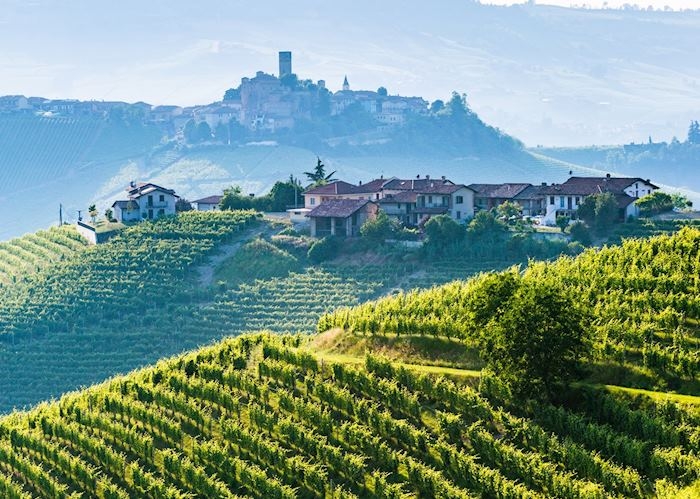Wines
Nebbiolo Langhe Runcaja Doc
In The Cellar: the maceration is carried out at controlled temperature for 6 days in steel tanks with daily and manual pumping over. The maximum temperature during the fermentation process is 29 ° C. This, not only, allows us to get a good polyphenolic extraction, but also limits excessive volatilization of fruity aromas. The alcoholic and malolactic fermentations are made in oak barrels of 500 L. The aging in tonneaux continues for 6 months with a constant work of suspension of the lees in order to preserve perfumes and qualities typical of the native territory.
| Grape variety | 100% Nebbiolo-Lampia |
| Zone of production | Santa Maria in La Morra |
| The Vineyard | is relatively young, under 15 years old with a plantation density of 5000 stump/Ha, typical of Langhe. |
| The Pruning | the training method is the Guyot with 8 buds and 55HL/Ha is the total production of the plantation. |

Alberto Burzi
My name is Alberto Burzi and I like to think every wine has a story to tell.
Every wine is able to express the joys and the difficulties of that vintage, but above all, I wish each wine bring the identity of the earth from which it comes.
I'm back on the footsteps of my grandparents, the roots of my family, and I grow and take care of historic vineyards in the most prestigious cru of Barolo in La Morra.
My aim is to make wines able to represent the bond between land and vine, and whose elegance can dominate the power of tannin

Piemonte
From Asti Spumante to Barolo, the wines of Piedmont are among Italy’s most prolific and best rated. The region’s pedigree is apparent in its 58 DOC and DOCG zones, and although it is only the sixth largest producer in terms of volume, it has the highest percentage of classified wines in all of Italy. No IGT wine area is identified. This westerly region that borders with Switzerland and France is influenced by the Alps and Apennines (the name Piedmont means "foot of the mountain") and its seasons are very distinctive. Hot, dry summers, cold winters, and temperate springs and autumns are common with occasional fog during harvest time.
Undoubtedly it is the red wines that lead the way in terms of quality and cellaring potential with wines made from the noble Nebbiolo grape. The DOCGs of Barolo, Barbaresco, Gattinara, Ghemme and Roero all represent the grape at its finest: they are complex, alluring wines with extraordinary depth and great ageing potential. Barolo ("king of wines and wine of kings") is made in the Langhe hills with its output of 6 million bottles a year far exceeding that of Barbaresco at less than 2.5 million.



